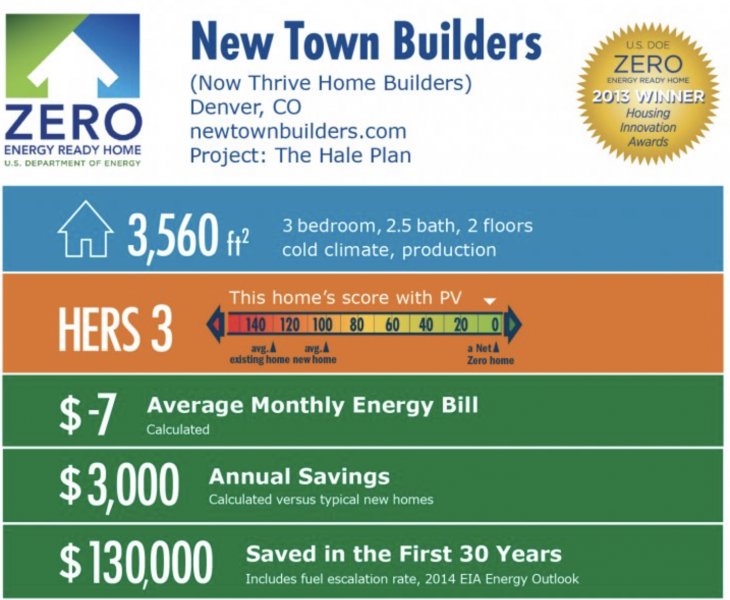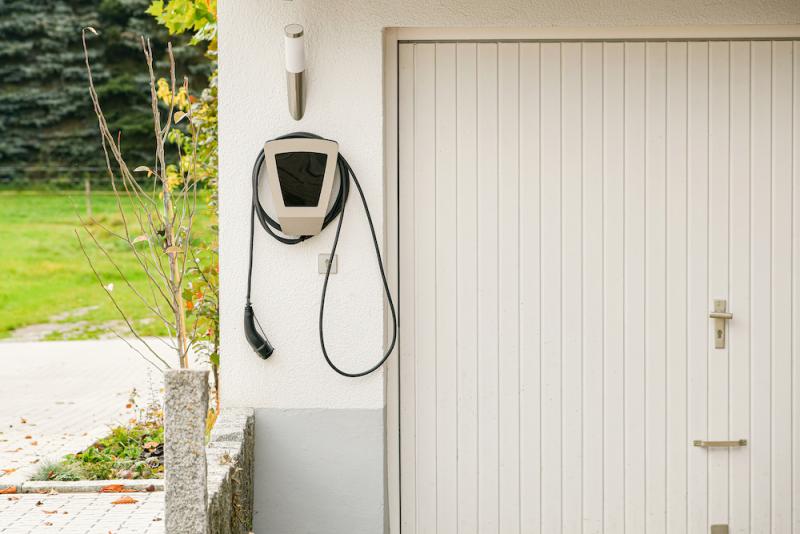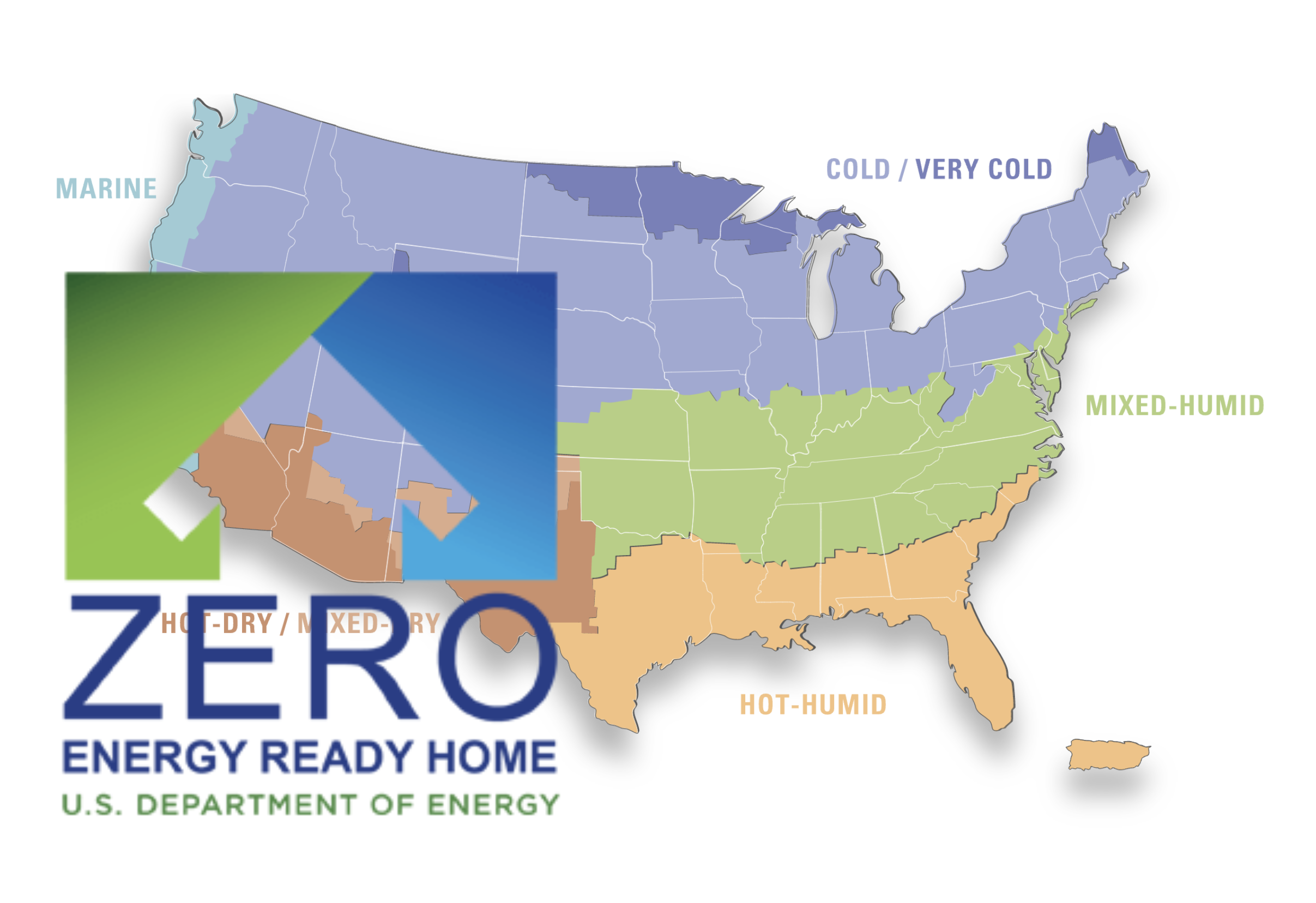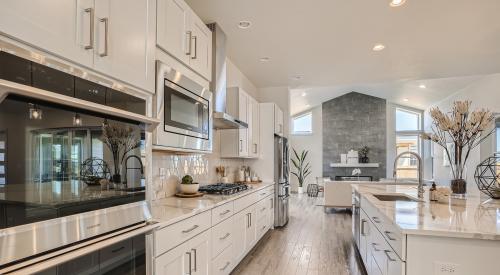 The nation’s most rigorous federal label for new homes has set its sights even higher. Late in 2022, the US Department of Energy's (DOE’s) Zero Energy Ready Home (ZERH) program announced the roll-out of ZERH Single Family Version 2. Homes built under the new version of the standard will be ready to plug and play with photovoltaic systems and high-efficiency electric technologies, and they will have even more robust insulation envelopes than previous ZERH projects.
The nation’s most rigorous federal label for new homes has set its sights even higher. Late in 2022, the US Department of Energy's (DOE’s) Zero Energy Ready Home (ZERH) program announced the roll-out of ZERH Single Family Version 2. Homes built under the new version of the standard will be ready to plug and play with photovoltaic systems and high-efficiency electric technologies, and they will have even more robust insulation envelopes than previous ZERH projects.
Since 2013, the ZERH program has played a key role in pushing the new home construction market towards greater efficiency, comfort, and durability. Originally called DOE Challenge Home, this voluntary program places an emphasis on certain must-have efficiency features: a robust thermal envelope, optimized duct location, and a full suite of measures that ensure superior indoor air quality. As part of the certification, performance is validated by independent, third-party verifiers.
Residential housing contributes nearly 21% of energy use in the United States. Certified Zero Energy Ready Homes not only reduce energy consumption, these homes are safer, healthier, more comfortable, and more affordable. High-quality construction and validated performance also translate to lower maintenance and fewer repairs; for some homeowners, energy bills are negligible. Affordable homes, many constructed for low-income and disadvantaged communities, make up approximately 30% of the homes certified to the ZERH standard.
The DOE developed the ZERH program to challenge builders to take home efficiency and performance to the next level. “The Zero Energy Ready Home program acts as a proving ground for innovative technologies and building materials,” says Eric Werling, ZERH Program Director. “The builders who have embraced this program are demonstrating that higher levels of home performance can be cost-effective and profitable, paving the way for affordable, healthy, zero-emission homes to become standard practice.”
The Next Level of Performance
ZERH is the most stringent, federal above-code voluntary program developed by the DOE. As a baseline, ZERH projects must also be certified through both the ENERGY STAR Certified Homes program for energy efficiency and the US Environmental Protection Agency’s (EPA’s) Indoor airPLUS program for a healthy indoor environment.
“By using the energy code and these established federal above-code programs as a stepping stone to achieve ZERH, builders are not being introduced to a slew of new requirements,” says Sam Bowles, marketing director for the ZERH program. "From there, the program takes the next step by leveraging proven innovations and advanced technologies that come from the cutting edge research and development process of the Building America program.”
ZERH specifications include requirements for industry best practices, including a comprehensive water protection package, advanced moisture and humidity control, optimized duct location, and requirements for water efficiency. Homes must also be “renewable ready”: the design must show that the dwelling’s rooftop could generate enough solar energy to balance its consumption, and the home must be wired for an inverter and photovoltaic (PV) array.
ZERH Hits an Inflection Point
 ZERH began with a handful of early adopters. It has since expanded to include more than 700 builders across the country, from smaller, boutique homebuilders to national production builders like Beazer Homes, which completed its first ZERH home in 2022.
ZERH began with a handful of early adopters. It has since expanded to include more than 700 builders across the country, from smaller, boutique homebuilders to national production builders like Beazer Homes, which completed its first ZERH home in 2022.
Some of the program’s leading partners have driven market changes in their geographic regions. For example, Thrive Home Builders (formerly New Town Builders) was one of the program’s earliest champions and built their first Zero Energy Ready Homes in Denver in 2013. The company now builds all of their homes to the standard. After witnessing Thrive’s success, several other Denver-area builders have since embraced the program. Similarly, Mandalay Homes, which like Thrive, builds all of their homes to the ZERH standard, has transformed the residential market in Arizona.
After launching in 2013, the program experienced slow but steady growth, reaching 1,000 certifications in 2016. The number of certified homes has nearly doubled every year since. In 2022, the program reached the notable milestone of 10,000 certified homes; it has now surpassed 12,000 homes.
ZERH V2: An Even Higher Standard
ZERH Version 2, which is available for certifying homes now, is based on the latest codes and standards, extensive feedback from industry stakeholders, and close coordination with the ENERGY STAR and Indoor airPLUS programs.
Version 2 emphasizes an even more robust building envelope and enhanced readiness for PV and high-efficiency electric technologies. More specifically, insulation levels are aligned with the 2021 International Energy Conservation Code, and qualifying homes must attain a higher efficiency threshold for ZERH certification. (Qualifying homes will generally have Energy Rating Index (ERI) scores in the low- to upper-40s.) The new standard also bumps up the high-efficiency lighting requirement to 100 percent.
In addition, Version 2 expands the use of PV-Ready features so that more new homes can go solar. Homes must also be “ready” for high efficiency electric technologies for space heating, water heating, and electric vehicles.

V2 requires one electric vehicle charging receptacle per dwelling unit and a dedicated and energized circuit that can accommodate an electric heat pump water heater.
Image courtesy andov | AdobeStock
“With growing demand for zero energy ready homes and a rapidly evolving homebuilding market, the release of ZERH Single Family Version 2 updates the value proposition for high performance homes,” says Bowles. “And now, for the first time, there will be a substantial federal incentive to help builders make zero energy ready homes their new standard offering."
The release of Version 2 coincides with a ten-year extension and expansion of the 45L tax credit. Thanks to the Inflation Reduction Act, signed last August, any home built to the standards of ZERH and/or ENERGY STAR now qualifies for a substantial credit, which goes directly to the builder. The credit has been extended through 2032.
With the rise in corporate sustainability reporting and the 10-year extension of the 45L tax credit, the ZERH program is on the brink of experiencing exponential growth.
Jaime Van Mourik, Associate AIA, LEED AP, is an ORISE Science, Technology, and Policy Fellow in the Building Technologies Office of the Department of Energy supporting the Residential Buildings Integration program working towards a zero carbon emissions future for all homes.













